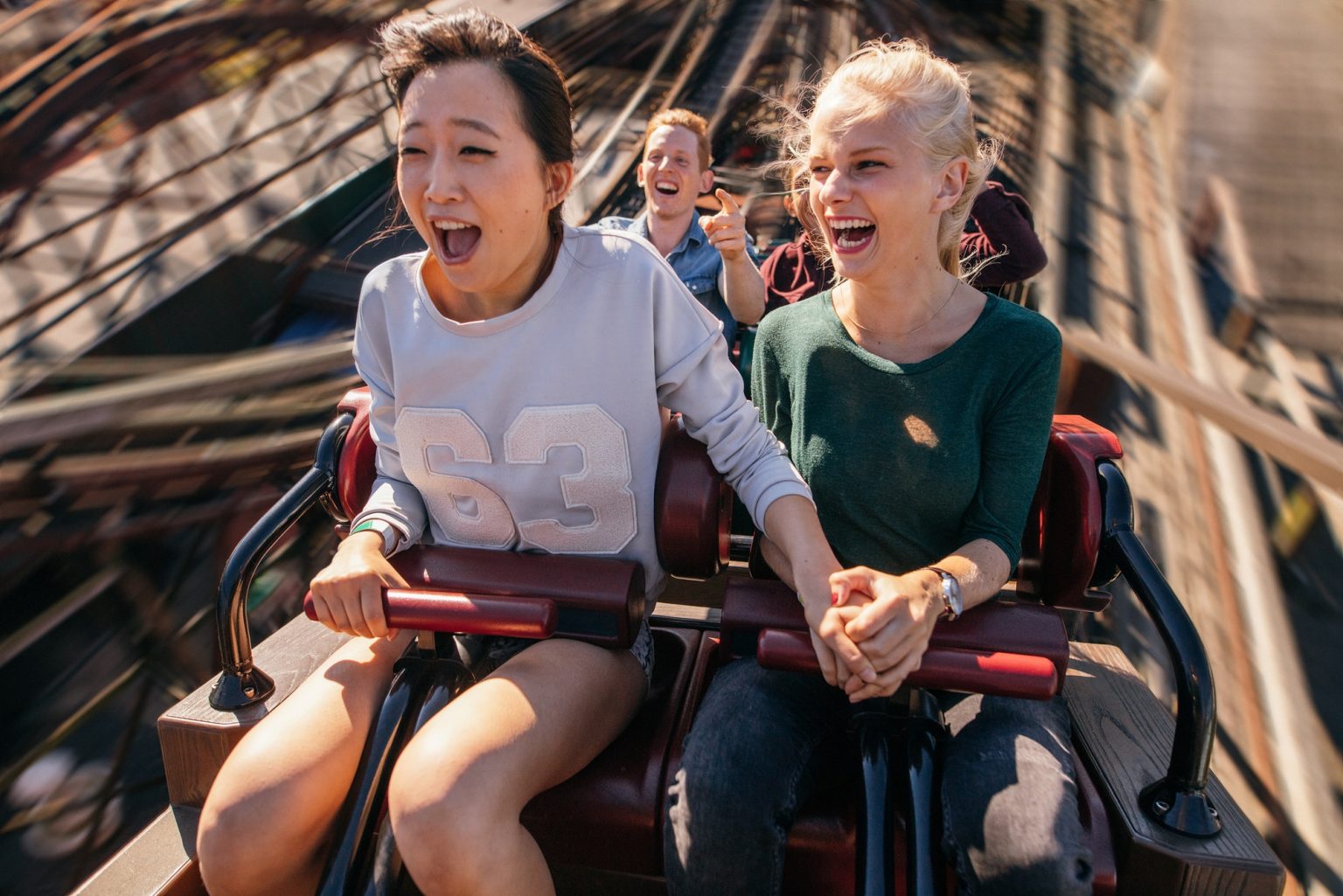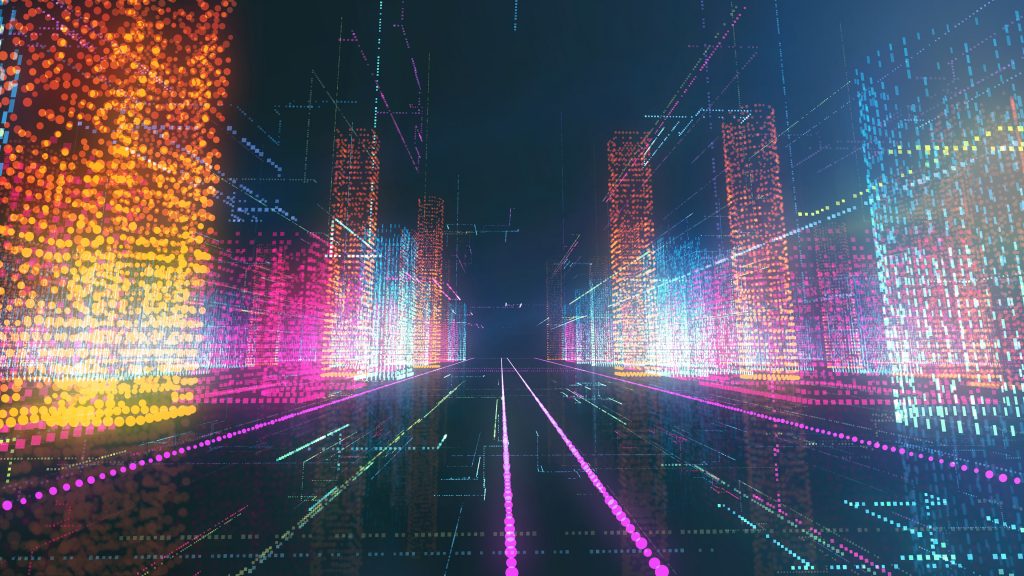For decades, theme parks have been offering pure escapism, allowing visitors to journey to distant lands, fantastical worlds, and even the far reaches of the cosmos. Places like Disneyland and Universal Studios have delighted generations and created countless memories.
Recently, theme parks have been incorporating virtual reality into their attractions to add a new dimension for thrill seekers. This isn’t to say that theme parks haven’t embraced immersive entertainment before, Universal Studios have utilised OMNIMAX screens for years, taking their patrons to impossible locations through a combination of motion bases (a series of hydraulic pumps) while massive 3D domes provide the visuals. The result is a seamless and heightened experience, but one where you’re still acutely aware that you’re in a hydraulic seat, watching a big screen. It’s immersive, but not to the extent of VR.
Currently, the most common way VR is being used within theme parks is as an overlay to an existing ride. One such ride is Kraken at SeaWorld Orlando – an ordinary roller-coaster, with the option to wear a VR headset to enhance the experience. But there are many more examples, from a swinging pirate ship turning into a fantasy dragon ride, to a drop ride becoming a virtual interactive battle to save a futuristic city from mutant spiders.
For decades, theme parks have been offering pure escapism, allowing visitors to journey to distant lands, fantastical worlds, and even the far reaches of the cosmos. Places like Disneyland and Universal Studios have delighted generations and created countless memories.
Recently, theme parks have been incorporating virtual reality into their attractions to add a new dimension for thrill seekers. This isn’t to say that theme parks haven’t embraced immersive entertainment before, Universal Studios have utilised OMNIMAX screens for years, taking their patrons to impossible locations through a combination of motion bases (a series of hydraulic pumps) while massive 3D domes provide the visuals. The result is a seamless and heightened experience, but one where you’re still acutely aware that you’re in a hydraulic seat, watching a big screen. It’s immersive, but not to the extent of VR.
Currently, the most common way VR is being used within theme parks is as an overlay to an existing ride. One such ride is Kraken at SeaWorld Orlando – an ordinary roller-coaster, with the option to wear a VR headset to enhance the experience. But there are many more examples, from a swinging pirate ship turning into a fantasy dragon ride, to a drop ride becoming a virtual interactive battle to save a futuristic city from mutant spiders.
It can be argued that VR has the ability to create rides that surpass anything offered in the real world, but its use also has some major shortcomings. Firstly, adding VR makes a ride take longer to cycle through passengers, which isn’t great for anyone. Secondly, some complain that VR rides are isolating and take away from the traditional shared experience of a ride, after all seeing your ride partner’s face as they drop 400 ft is a major part of the fun! Disney CEO, Bob Iger, has said no to Virtual Reality in their parks, as headsets that completely block out the real world for a virtual one is something he considers “ersatz.” Fair point; Disney spends insurmountable time and money creating compelling real world experiences and would not want to take away from that.
Enter AR. It’s a group experience and blends in with the real world. Whilst museums have started to embrace the technology, major amusement parks have been slow on the uptake. To date, official park apps serve as little more than opportunities to organise the queuing experience or purchase in-ride photos. And whilst Disney has been looking into adding AR experiences to their theme parks, and Universal Studios explored AR a few years ago, nothing monumental has materialised yet.
What can theme parks learn from attractions that are already using AR?
In Singapore, the National Museum introduced a temporary exhibit called ‘Story of the Forest’ – an immersive exhibition by teamLab, using the work of William Farquhar to create a beautiful installation to bring his drawings of flora and fauna to life. The exhibition comes with a companion app, and it works remarkably like Pokemon Go, telling you which animals are close to you. If you manage to get a picture of an elusive critter, it’s added to your collection, and you receive more information about it. It’s a great example of gamifying an exhibition, as it encourages users to look a little deeper and find hidden details.
Now, imagine this being used in a theme park. Point your camera at a character, and let the app tell their story, provide details about them you might not know, and of course a link to the store to purchase merchandise. And that’s just the basic stuff. Gamification can be added to make the AR integration more sophisticated. AR apps like this could extend the amount of time a visitor spends exploring each attraction or provide an entirely new attraction away from main rides. From a purely business standpoint, it keeps people in parks longer, and there’s a lot of potential for discovery, which encourages repeat visits.
Rather than augmenting an entire theme park, which could be rather time-consuming and costly, a single ride could be augmented, just as the Smithsonian National Museum of Natural History did with its ‘Skin & Bones’ exhibition. The exhibition itself has existed for a while, but the AR implementation is a lot newer, enhancing the collection through a free app. The app itself brings skeletons in the exhibit to life, putting flesh on the bones of extinct creatures, and seeing how they would have moved through the world if they were still here. The app also works at home, meaning that it has continued educational value even after the user leaves the exhibit hall.
On a far wider scale, the entirety of the UK has been turned into an AR experience with the ‘England’s Historic Cities’ app. Utilising specialised trigger points at a selection of English Heritage sites, activated by your phone’s camera, visitors can uncover AR displays, reconstructions and 360-degree panoramas telling the unique story of each site. It’s a great way to breathe new life into these ancient sites and raise awareness amongst new audiences.
AR allows us to write our own rules on how people see the world, and how they react to it. By bringing this technology to the stoic theme park industry, we can reinvigorate older rides, enhance the queuing experience, provide a practical way of providing ride info, and recapture the imaginations of guests.
AR compliments exactly what a theme park was born to do – bring magic into the real world. Rather than transporting people away from their reality, which VR does, AR marries the physical and digital in unexpected ways, allowing a park to create unique shared experiences.
It won’t be long before AR is more widely adopted by theme parks, providing experiences like we’ve never seen before. When it is used to add value to the entire theme park experience – rather than as a gimmick or side-attraction – and becomes part of the fabric of the park itself, that, to me, feels like the real magic of immersive.




